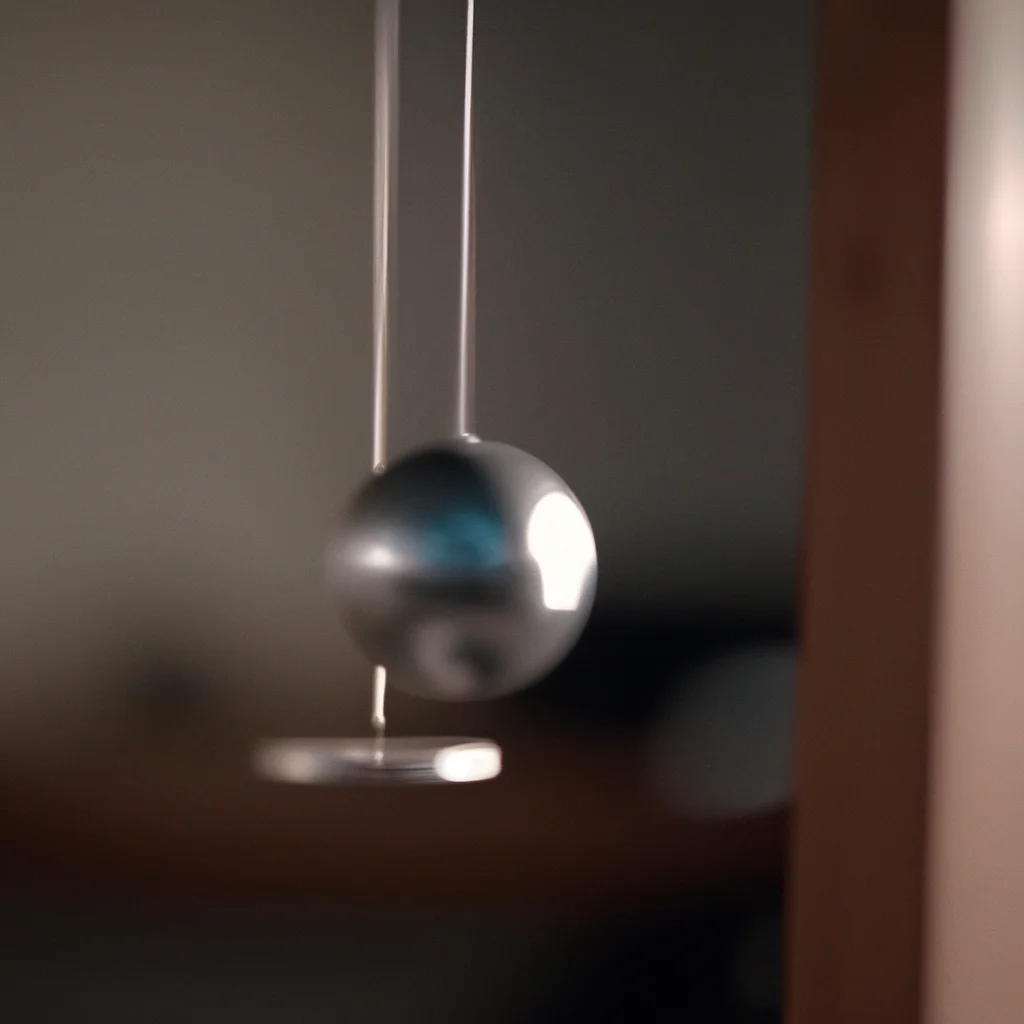How does a pendulum work?


How does a pendulum work?
A pendulum is a simple device that has been used to measure time for centuries. It consists of a weight, called a bob, suspended from a fixed point so that it can swing freely back and forth. The motion of the pendulum is governed by the laws of physics, and understanding these laws is key to understanding how a pendulum works.
Pendulum Physics
The motion of a pendulum is governed by two fundamental principles of physics: gravity and inertia. Gravity is the force that pulls the bob down towards the center of the earth, while inertia is the tendency of an object to resist changes in its motion. When the bob is released, it swings back and forth, with the force of gravity pulling it down and the force of inertia causing it to swing back up.
Pendulum Motion
The motion of a pendulum is periodic, meaning that it repeats itself over and over again. The time it takes for one complete swing of the pendulum is called its period, and it depends only on the length of the pendulum and the strength of gravity. The longer the pendulum, the slower it swings, while the stronger the force of gravity, the faster it swings.
The motion of a pendulum can be described mathematically using the principles of harmonic motion. This type of motion is characterized by a sinusoidal curve, with the pendulum swinging back and forth between two extreme positions. The amplitude of the motion is the distance between the extreme positions, while the frequency is the number of complete swings per unit of time.
Pendulum Experiment
One of the most famous experiments involving a pendulum was conducted by Jean Foucault in 1851. He suspended a pendulum from the dome of the Pantheon in Paris and observed its motion over the course of several hours. He found that the plane of the pendulum’s swing rotated slowly over time, a phenomenon now known as the Foucault pendulum. This rotation is caused by the rotation of the earth, which causes the plane of the pendulum’s swing to appear to move relative to the earth.
Pendulum Theory
The theory of the pendulum has many applications beyond timekeeping. In physics, pendulums are used to study the behavior of waves and oscillations. They are also used in seismology to measure earthquakes and in navigation to measure the pitch and roll of ships. In engineering, pendulums are used to stabilize structures and to control the motion of machines.
In conclusion, a pendulum is a simple device that has been used for centuries to measure time. Its motion is governed by the laws of physics, including gravity and inertia. Understanding the principles of harmonic motion and the Foucault pendulum experiment are key to understanding the theory of the pendulum. The pendulum has many applications in physics, seismology, navigation, and engineering, making it one of the most versatile devices in science.
Recent Posts
How do I create an engaging and informative online quiz or assessment?
Creating an engaging and informative online quiz or assessment can be a powerful tool for… Read More
What are the most effective methods for managing and reducing work-related stress in the hospitality industry?
Work-related stress is a common issue in the hospitality industry, where employees often face long… Read More
How can I improve my assertiveness and communication skills in a leadership position?
In a leadership position, assertiveness and effective communication skills are crucial for success. Being able… Read More
What are the key elements of a successful employee recognition and rewards program?
Employee recognition and rewards programs play a crucial role in motivating and engaging employees, as… Read More
How do I effectively manage and respond to customer feedback and reviews?
Customer feedback and online reviews play a crucial role in shaping a company's reputation and… Read More
What are the best strategies for effective time management as a stay-at-home parent?
Effective time management is crucial for stay-at-home parents who juggle multiple responsibilities on a daily… Read More